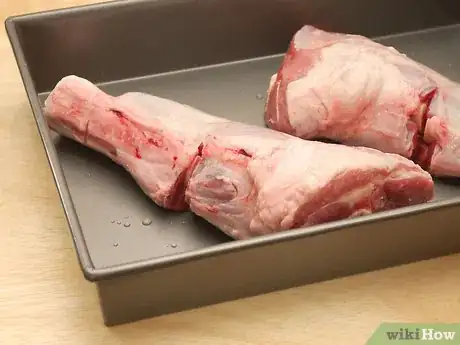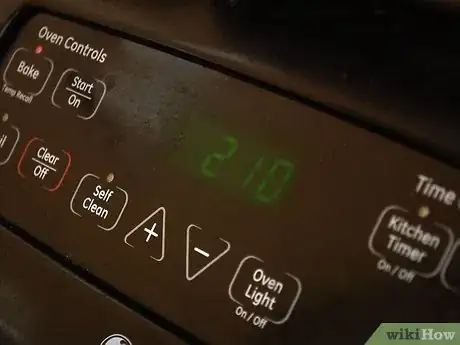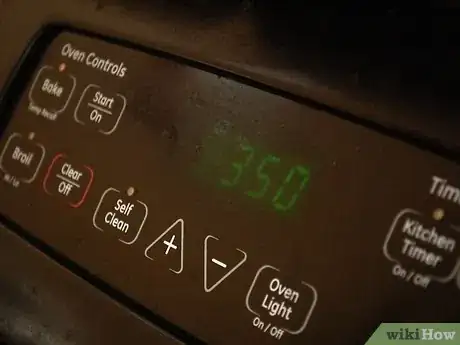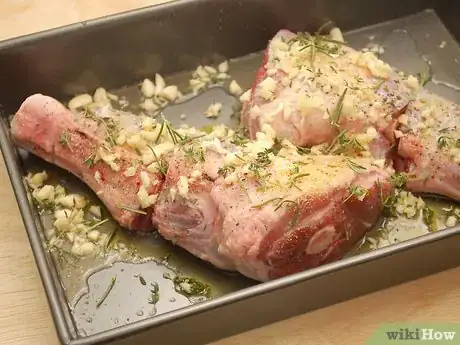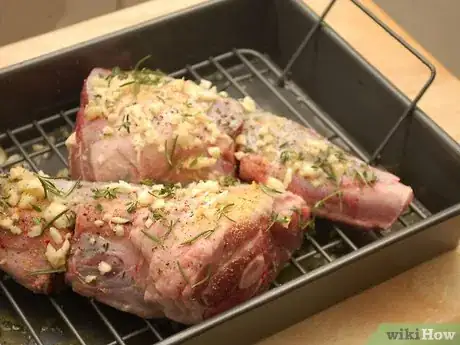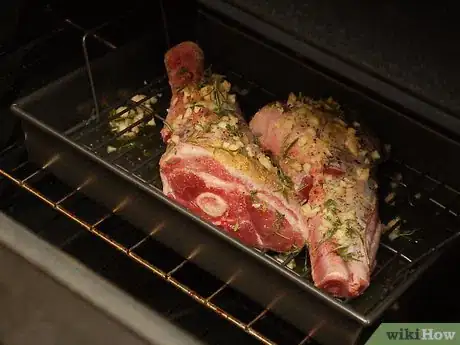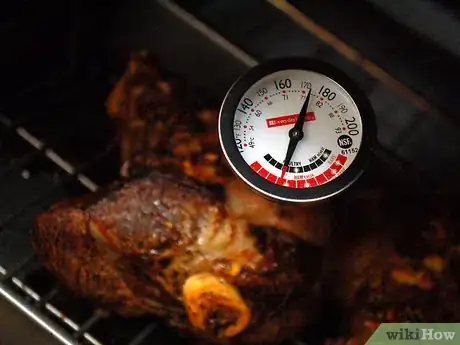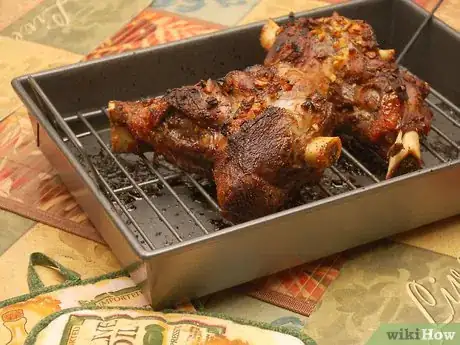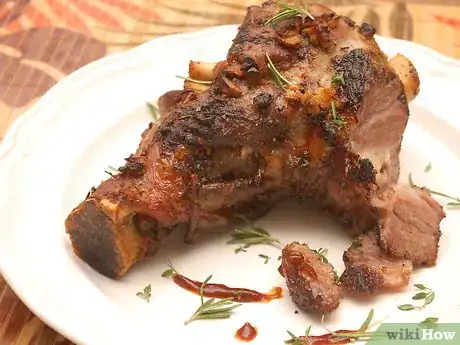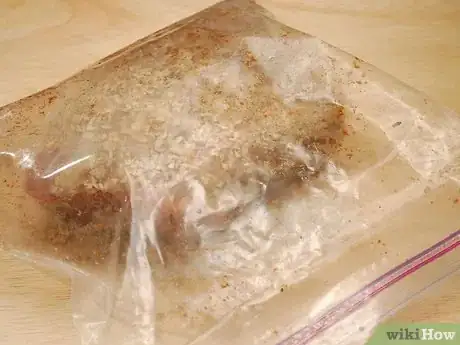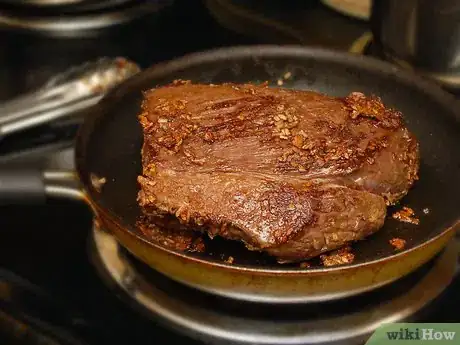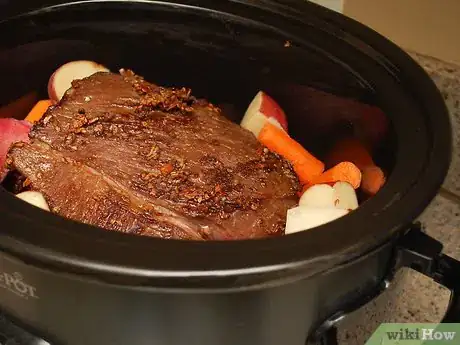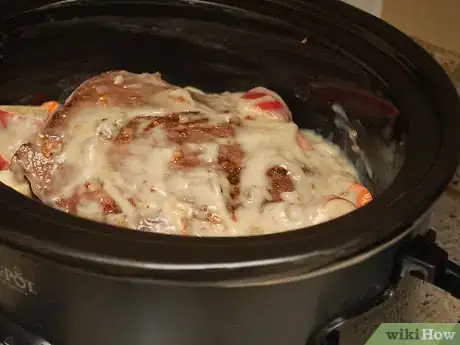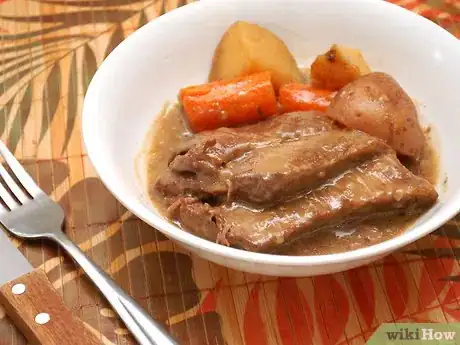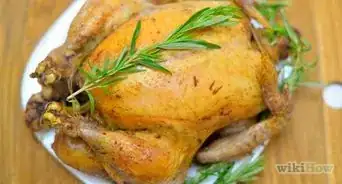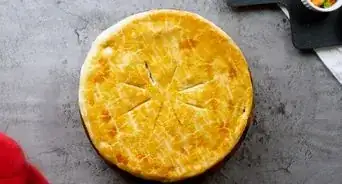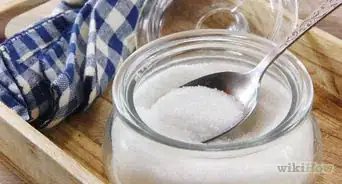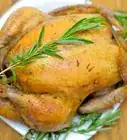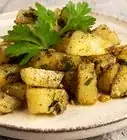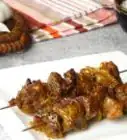This article was co-authored by Ollie George Cigliano. Ollie George Cigliano is a Private Chef, Food Educator, and Owner of Ollie George Cooks, based in Long Beach, California. With over 20 years of experience, she specializes in utilizing fresh, fun ingredients and mixing traditional and innovative cooking techniques. Ollie George holds a BA in Comparative Literature from The University of California, Berkeley, and a Nutrition and Healthy Living Certificate from eCornell University.
This article has been viewed 204,443 times.
If there was a king of the slow-cooking style, the roast would be it. Traditionally, a roast was served on Sundays when families would gather together and feast. Happily, roasts are now considered a staple of any weekday menu. Whether you cook your roast in the oven or in a slow cooker, this is a meal that practically cooks itself.
Steps
Cooking Roast in an Oven
Part One: Estimating Cooking Time and Temperature
-
1Let the meat 'rest'. Whether you are roasting lamb, pork, beef, bison, or some other game, you will want to let your roast rest. This means taking it out of the refrigerator, placing it in a pan (to catch any drippings), and letting it sit at room temperature. If you are cooking a small roast, you should let it sit for roughly 30 to 60 minutes, while large roasts can sit for up to an hour and a half. Resting the roast allows the meat to become moist again--when it is in the refrigerator, the meat tends to become tougher.
-
2Estimate the time it will take your roast to cook. Generally, roasting time can be estimated by how many pounds of meat you will be cooking. The length of time you cook your roast for will depend on whether you want your meat rare, medium rare, or medium. However, please note that every oven is different so while this offers an estimate of the cooking time, you should still monitor the internal temperature of the meat to determine when it is done. Overcooking is the most common reason a roast will dry out, so be on the lookout for this.
- For a rare roast: Allow 15 minutes of cooking time for every pound of roast. For example, if you had a 5 pound roast, you would cook your roast for 75 minutes if you wanted it rare.
- For a medium rare roast: Cook the roast for 20 minutes for every pound. If you were cooking a 5 pound roast, you would cook it for 100 minutes.
- For a medium roast: Allow 22 minutes of cooking time for every pound. If you were cooking a 5 pound roast, you would cook the meat for 110 minutes.
- If you are cooking a pork roast, you should allow 20 minutes per pound of meat.
Advertisement -
3Preheat your oven to the right temperature. This will be determined by the kind of meat you will be roasting. Here are the roasting temperatures for all of the basic meat roasts[1] :
- Roast at 325ºF: Lamb leg or shoulder roast; pork loin, shoulder, crown, or rib roast; full ham (with bone or boneless); veal loin or rib roast; beef round-tip, rump, bottom round, eye round, and fresh or corned brisket roast.
- Roast at 350ºF: Beef rib-eye (boneless) or rib roast (bone-in); pork rib roast.
- Roast at 425ºF: Beef tenderloin and tri-tip roast; pork tenderloin roast.
Part Two: Cooking Your Roast
-
1Season your roast. Traditionally, roasts were simply seasoned with salt and pepper. However, you can also season it with garlic, or any herbs that you enjoy. If you want to marinate your roast in a bowl or a Ziploc bag, you will have to do so a couple of hours before you plan on roasting the meat, as marinade takes a relatively long time to get absorbed by the meat.
- If your roast has a layer of larding fat on top of it (as most roasts do) you can either sprinkle seasonings on top of the fat or remove the layer of fat (which will probably be held down by strings, which you should remove), season the meat underneath, and then lay the fat back on top again. The fat will add flavor to the roasting meat.
-
2Place a rack inside your roasting pan. Your roasting pan should be large and shallow. Place a rack in the pan and then place the meat on the rack. The rack is important because it will keep the meat separate from its juices. If the meat were to sit in its juices, it would steam rather than roast.
-
3Cook your roast. You do not have to monitor it until you get closer to the end of the estimated cooking time. You will need a meat thermometer to make a good roast--the key to roasting is to be able to monitor the internal temperature of the meat.
-
4Check the internal temperature of the roast. When the estimated cooking time is coming to an end, you will need to check the internal temperature of the roast to make sure that it is cooked properly. Use a meat thermometer to check the internal temperature. Remove the items listed below when they reach the designated temperature[2] :
- 135ºF: Remove beef rump, eye round, bottom round roast.
- 135ºF to 150ºF: Remove beef ribeye, rib, tenderloin, and tri-tip roast.
- 140ºF: Remove full ham.
- 140ºF to 155ºF: Remove beef round tip; lamb leg, shoulder, and shank leg roast.
- 145ºF: Remove pork loin, crown, and shoulder roast.
- 155ºF : Remove veal loin and rib roast.
-
5Remove the roast from the oven. Let the roast rest on a platter or cutting board that has grooves that the drippings can run into. Cover the roast with parchment or foil. Roasts will continue to cook even after they have been removed from the oven. Let small roasts rest for 10 minutes; larger roasts should rest for 15 to 30 minutes. Allowing the meat to rest will help the meat retain its moisture, creating a juicier roast.
- A good way to tell when your roast is done resting is to check the internal temperature again. The meat can be sliced and served when the internal temperature begins to decrease.
-
6Slice the meat and serve. Enjoy!
- If you want, you can use a carving cutting board with a tray to collect any juices and pour over meat while serving.
Cooking Roast in a Slow Cooker
-
1Place your meat in a plastic bag. While this may sound weird, it is actually a really effective way to coat your roast in seasoning. Make sure the bag you use is sealable. Once your meat is in the bag, add two tablespoons of flour, one teaspoon kosher salt (or regular salt), one-half teaspoon of black pepper, and two teaspoons of garlic powder. Seal the bag and shake well until the meat is thoroughly coated in the seasoning.
- If you are following a specific roast recipe, such as wikiHow's recipe for cranberry pork roast, you should follow the seasoning directions listed in the recipe.
-
2Brown the meat. In order to do this, place a tablespoon of olive oil in a large skillet. Bring it to a high heat, place the meat in the skillet and simply sear all sides of the meat so that they turn a golden brown color. Browning meat adds flavor to the roast.
-
3Add any vegetables you are cooking with your roast. Slow cooker are great because they are the epitome of the 'one-pot meal'. Simply through in your meat and vegetables and your dinner will cook itself. Place the vegetables in the cooker before the meat so that they absorb some of the meat's delicious flavors. Traditional slower cooker roast is made with carrots, potatoes, and onions but you can really cook whatever vegetables you want. Get creative! Just make sure to cut up whatever veggies you use into small chunks so that they cook more thoroughly.
- You can also cover the meat with the vegetables, or surround the meat with the veggies--it really is up to whatever you prefer.
-
4Decide what liquid you would like to cook your roast in. Many people choose to use a half cup of beef broth to slow cook their roasts in, as it adds to the natural flavor of the roast. Others use wine, cream of mushroom soup, water, or a variety of other ingredients like Worcestershire or soy sauce.
-
5Cover your slow cooker and turn it to low. The secret to a roast is cooking slowly, letting it absorb as much juice as possible. Use your cooker's low setting and let it do the rest of the work. Beef roasts should generally be left in the slow cooker for 8 to 10 hours, while pork roasts will generally be done after 6 or 7 hours.[3]
-
6Take the roast out of the slow cooker. It should be tender and easy to cut. If you find that your roast isn't as moist as you want it to be when the cooking time is up, take it out of the cooker, cut it into smaller pieces, and return it to the cooker to absorb some more of the moisture. When it is done, slice it up and serve alongside the vegetables. Enjoy!
Expert Q&A
-
QuestionHow do I cook a beef roast without drying it out?
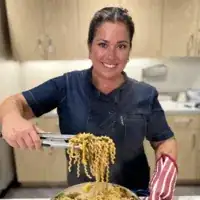 Ollie George CiglianoOllie George Cigliano is a Private Chef, Food Educator, and Owner of Ollie George Cooks, based in Long Beach, California. With over 20 years of experience, she specializes in utilizing fresh, fun ingredients and mixing traditional and innovative cooking techniques. Ollie George holds a BA in Comparative Literature from The University of California, Berkeley, and a Nutrition and Healthy Living Certificate from eCornell University.
Ollie George CiglianoOllie George Cigliano is a Private Chef, Food Educator, and Owner of Ollie George Cooks, based in Long Beach, California. With over 20 years of experience, she specializes in utilizing fresh, fun ingredients and mixing traditional and innovative cooking techniques. Ollie George holds a BA in Comparative Literature from The University of California, Berkeley, and a Nutrition and Healthy Living Certificate from eCornell University.
Private Chef & Food Educator Keep it uncovered until the roast reaches its desired doneness in the oven. Then, remove it from the oven and tent the roast with foil.
Keep it uncovered until the roast reaches its desired doneness in the oven. Then, remove it from the oven and tent the roast with foil. -
QuestionWhat size roast do I need to buy if I am serving 12 people?
 Community AnswerAllow for a 1/2 pound of meat per person. Don't forget that depending on whether the meat is to be well done or rare, shrinkage will occur due to the length of cooking time.
Community AnswerAllow for a 1/2 pound of meat per person. Don't forget that depending on whether the meat is to be well done or rare, shrinkage will occur due to the length of cooking time. -
QuestionShould I cook potatoes and carrots 8 hours with the roast?
 Community AnswerAbsolutely. The potatoes and the carrots will have all the flavors of the meat and spices absorbed, and it will taste super.
Community AnswerAbsolutely. The potatoes and the carrots will have all the flavors of the meat and spices absorbed, and it will taste super.
Things You'll Need
- Roast of meat
- Black pepper and salt
- Garlic and other herbs
- Roasting pan with rack
- Meat thermometer
- Large skillet
- Oil
- Slow cooker
- Water or other liquid to cook with
- Carrots, potatoes and other vegetables
- Cutting board
Expert Interview
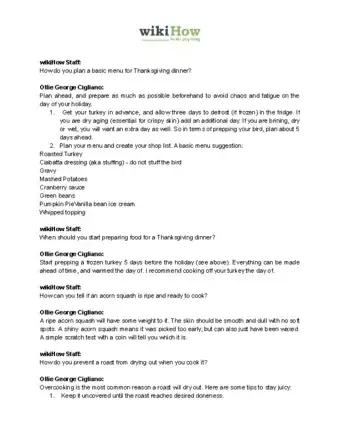
Thanks for reading our article! If you'd like to learn more about cooking, check out our in-depth interview with Ollie George Cigliano.
References
About This Article
To cook a prime rib roast, begin by seasoning the roast generously on all sides with coarse ground salt and pepper. Then place the prime rib roast with the fatty side up on a rack in a roasting pan. Cook the roast in a 200°F (93°C) oven for about 15 minutes for each pound of meat until an instant-read thermometer in the center of the roast reads 125°F (52°C) (for rare), 130°F (54°C) (for medium-rare) or 135°F (57°C) (for medium or medium-well) When it reaches the temperature you want it to be, take the roast out and tent it with foil. Let it rest for 30 minutes or more, then turn up the heat to 500 or 550°F (260 or 288°C) and let the roast sear for about 8-10 minutes, or until it is nicely browned. Carve the roast and serve. For tips on how to cook your roast in a slow cooker, read on!
